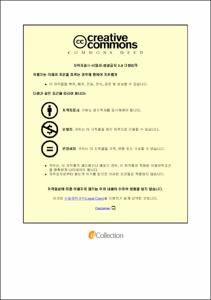몽골인 학습자를 위한 한국어 이중 모음 교육 연구
- Alternative Title
- A STUDY ON TEACHING KOREAN DIPHTHONGS TO MONGOLIAN LEARNERS OF KOREAN
- Abstract
- The purpose of this study is to analyze the perception and production of Korean diphthongs for Mongolian Korean learners and studying the efficient way of teaching those diphthongs.
The summary of this study is as follows.
In chapter 1, revealed the need for research by presenting the purpose of the study and reviewing the preceding study. According to the Ministry of Education, the number of Mongolian Korean learners is increasing. However, there is a lack of study on Korean Pronunciation of Mongolian korean learners. Most are studies on monophthongs. Pronunciation is the basic part of studying a language, but listening, reading, speaking, and writing has been overlooked. So far the importance of pronunciation has been overlooked compared to listening, reading, speaking and writing. Pronunciation is important for fluency of Mongolian Korean learners. The basis of teaching Korean pronunciation is vowel, and not only monophthongs but also diphthongs are important. Therefore, this study will study Korean diphthongs for Mongolian Korean learners.
In chapter 2 comparative between Korean and Mongolian simple vowels and diphthongs and diphthongs. The results of the comparison system of diphthongs are as follows. Korean diphthongs /je/, /ja/ had the same IPA and vowel system as Mongolian diphthongs /je/ and /ja/. Therefore, Korean diphthongs /je/, /ja/ predicted that Mongolian learners will have no difficulty learning Korean diphthongs. In addition, Korean diphthongs /jʌ/ does not have the same vowel system in Mongolian diphthongs. Therefore, Korean diphthongs /jʌ/ predicted that Mongolian learners will have difficulty learning the Korean diphthongs. Also Mongolian Korean learners have difficultes in learning Korean monophthongs /o/, /u/, and /w/-diphthongs did not developed in Mongolian diphthongs. Terefore, Korean diphthongs /ju/, /jo/, /wa/, /wi/, /we/, /wʌ/ predicted that Mongolian learners will have difficulty learning the Korean diphthongs. Finally, because there is no /ɰ/ pronunciation in Mongolian, Korean diphthongs /ɰi/ predicted that Mongolian learners will have difficulty learning the Korean diphthongs.
In chapter 3, deals with perception test and production test. First, Mongolian Korean learners listened and wrote Korean diphthongs recorded in Korean. As a result, the learners were well perception of /ja/ and /jʌ/. And the error was higher in order of /ɰ/, /wʌ/, /jo/, /wi/, /je/, /ju/, /we/, /wa/. Then, Korean listened and wrote Korean diphthongs recorded by Mongolian Korean learners. And the error was higher in order of /ɰi/, /ju/, /wʌ/, /wi/, /je/, /jʌ/, /jo/, /we/, /wa/, /ja/.
In chapter 4, based on the results on the study, the teaching methods for Mongolian Korean learners is presented.
In chapter 5, this study concludes by summarizing the results of the study. The study identified errors in the recognition and calcualtion of diphthongs in Mongolian Korean learners through test. In this study, we did not use meaningful sentences to accurately test the pronunciation of Korean diphthongs of Mongolian Korean learners.
- Issued Date
- 2018
- Awarded Date
- 2018. 8
- Type
- Dissertation
- Keyword
- 한국어 교육 몽골인 한국어 학습자 한국어 이중 모음
- Publisher
- 부경대학교
- Affiliation
- 부경대학교 교육대학원
- Department
- 교육대학원 외국어로서의한국어교육전공
- Advisor
- 권성미
- Table Of Contents
- Ⅰ. 서론 1
1. 연구 목적 1
2. 선행 연구 검토 및 연구의 필요성 2
3. 연구 질문 및 연구 방법 6
Ⅱ. 한·몽 단모음과 이중 모음 대비 8
1. 단모음 8
가. 한국어의 단모음 8
나. 몽골어의 단모음 10
다. 한·몽 단모음 대비 12
2. 이중 모음 21
가. 한국어의 이중 모음 21
나. 몽골어의 이중 모음 23
다. 한·몽 이중 모음 대비 25
Ⅲ. 습득 양상 30
1. 인식 실험 30
2. 산출 실험 42
Ⅳ. 몽골인 학습자를 위한 한국어 이중 모음 교육 방안 51
Ⅴ. 결론 64
* 참고 문헌 67
- Degree
- Master
- Appears in Collections:
- 교육대학원 > 외국어로서의 한국어교육전공
- Files in This Item:
-
-
Download
 몽골인 학습자를 위한 한국어 이중 모음 교육 연구.pdf
기타 데이터 / 497.01 kB / Adobe PDF
몽골인 학습자를 위한 한국어 이중 모음 교육 연구.pdf
기타 데이터 / 497.01 kB / Adobe PDF
-
Items in Repository are protected by copyright, with all rights reserved, unless otherwise indicated.